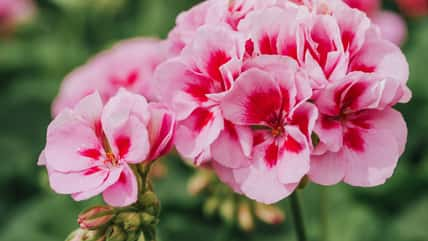Peonies Are An Impressive Addition To Any Garden, And Here’s How You Can Successfully Grow All 3 Varieties

Peonies are a favorite among many, which is hardly a surprise considering their luxuriant beauty. These breathtaking, fluffy blooms with silky petals will make an impressive addition to your garden.
Peonies flower between the months of May and June but quickly disappear again, so enjoy them while they last! There are three types of peonies: herbaceous, tree, and intersectional.
Herbaceous varieties are the most popular and low-maintenance choice. They offer the longest bloom season, appearing each spring before dying back every winter. They usually come in shades of pink and white and can grow between two to three feet tall.
The green, flexible stems of herbaceous peonies are meant to last for one growing season only, so they tend to droop down toward the ground, especially when they get wet from the rain. For this reason, they may need some staking.
Next, we have the tree peony, which grows from a woody stem. The plant is much more shrub-like. Unlike the common herbaceous peony, tree peonies don’t die down at the end of the season.
Their woody stalks remain standing throughout the winter and on to the next season. They also don’t require staking because their stems are strong enough to hold up the weight of the flowers.
The flowers on tree peonies tend to last longer as well. However, they are less tolerant of harsh environmental conditions and are more high-maintenance than their herbaceous counterparts.
Finally, there are intersectional peonies, also called Itoh peonies. These are rarer and are a cross between tree and herbaceous.
Intersectional peonies offer a wider variety of colors. Not only are there the classic pinks and whites, but oranges and yellows are available, too.

sonyachny – stock.adobe.com – illustrative purposes only
The best time to plant peonies is in the fall before the first frost. You could plant them in the spring, but spring-planted peonies don’t do as well, and they lag a year behind those planted in the fall. Space the plants three to four feet apart to give the blooms room to grow.
You also want to ensure that you don’t plant the roots too deeply; otherwise, they won’t flower. Place peonies no more than two inches below the soil.
Peonies love areas with full sun and well-drained soil. When you water them, do so at the base of the plant to avoid getting droplets on the foliage and risking disease.
Feed your peonies with compost or fertilizer once a year if you have rich, fertile soil. Choose a fertilizer with higher levels of phosphorous and potassium to coax out intense blooms.
If true crime defines your free time, this is for you: join Chip Chick’s True Crime Tribe
She’s Not Allowing Her Nephew To Bring His Service Dog To Her Wedding Because She’s Allergic To Dogs
Brighten Up Your Patio By Growing Roses In Containers, And Here’s How You Can Get Started
Sign up for Chip Chick’s newsletter and get stories like this delivered to your inbox.
More About:Gardening





